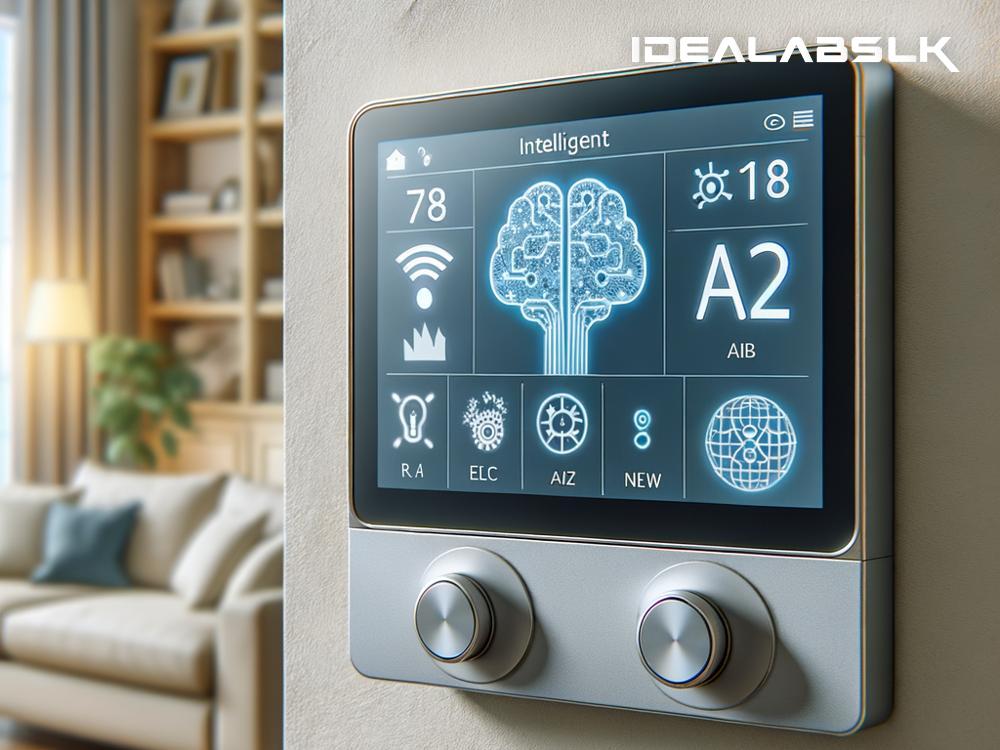How AI Works in Predictive Features for Smart Home Thermostats
As we navigate towards a future where technology integrates seamlessly with our daily lives, smart home thermostats are becoming increasingly popular. These devices are not just about adjusting the temperature from your smartphone; they come packed with advanced features powered by Artificial Intelligence (AI) that can learn your preferences, predict your needs, and save energy simultaneously. But how exactly does AI work its magic in smart thermostats? Let's break it down into simpler terms.
Understanding AI in the Context of Smart Thermostats
At its core, AI is about simulating human intelligence processes by machines, especially computer systems. These processes include learning (the acquisition of information and rules for using the information), reasoning (using the rules to reach approximate or definite conclusions), and self-correction. When applied to smart home thermostats, AI leverages these capabilities to optimize your home's heating and cooling systems.
Learning Your Behavior
The first step in the magic of smart thermostats is learning. Through sensors and your interactions with the thermostat (like adjusting the temperature throughout the day), the AI begins to gather data about your habits and preferences. Does the temperature go down every night at 10 PM? Do you prefer it cooler when it's raining outside? The AI takes note of all these patterns.
This process involves sophisticated algorithms — think of them as complex instructions — that analyze the data to find consistent patterns and behaviors. Over time, the thermostat understands your schedule and preferences without you needing to input them manually.
Predictive Adjustments
With a solid understanding of your habits, the AI then moves on to prediction. This is where things get really exciting. Using historical data (how you've adjusted the temperature in the past under similar conditions) and real-time data (like the current weather and whether or not you're actually home), the thermostat can anticipate your needs.
For instance, if the AI knows you usually turn the heat up on cold mornings, it can begin warming up the house before you even wake up. Similarly, if it's learned that you're typically not home in the afternoons, it can adjust the temperature to save energy, knowing you won't need the house as warm or cool. This kind of predictive adjustment is what makes smart thermostats so energy-efficient, potentially saving you money on your utility bills.
Adapting and Improving Over Time
Perhaps one of the most impressive aspects of AI in smart thermostats is their ability to adapt and improve. Based on continuous feedback—from your adjustments, weather conditions, and even from other users in aggregated, anonymized data—the thermostat's AI algorithms are constantly refined and optimized. This means the more you use it, the smarter and more efficient it gets.
Understanding the Impact
The impact of AI-powered predictive features in smart thermostats is significant. Not only do they offer unparalleled convenience by automating temperature control, but they also play a crucial role in energy conservation. By ensuring that heating and cooling are only used when needed, these thermostats help reduce the overall energy consumption and, consequently, the carbon footprint of households. This is a win-win situation for both homeowners looking to save on energy bills and for the planet.
The Road Ahead
As we move forward, the integration of AI in smart home devices like thermostats is only expected to grow more sophisticated. We might see features that integrate with other smart home devices for even more personalized and efficient home automation. The possibilities are expansive, from learning your preferences in lighting and adjusting the ambiance based on the temperature, to even predicting potential maintenance issues before they arise.
In Conclusion
The magic of AI in smart home thermostats represents just the tip of the iceberg in how technology is making our lives more comfortable and energy-efficient. By using advanced algorithms to learn, predict, and adapt, these devices are paving the way for a future where our homes not only understand our needs but anticipate them. As we continue to embrace smart technology, the intelligent, predictive features of devices like smart thermostats will become an integral part of managing our living environments, making them more comfortable, convenient, and environmentally friendly. Indeed, the future of home automation is bright, and it's being led by the incredible capabilities of Artificial Intelligence.

